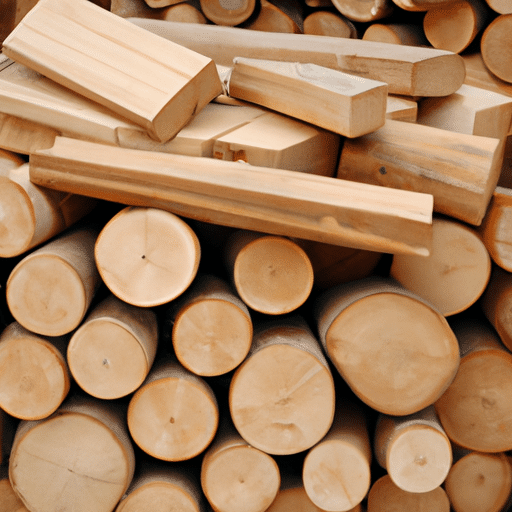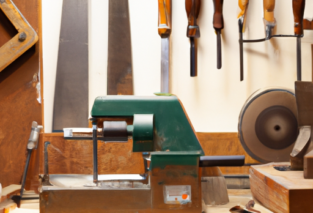In this article, you’ll learn about the best practices for storing and handling lumber. We’ll discuss the importance of proper storage to prevent damage and decay, as well as the best ways to handle and transport lumber safely. You’ll also discover tips for maintaining the quality of your lumber and preventing potential hazards. Whether you’re a professional in the lumber industry or a DIY enthusiast, this article will provide you with valuable insights to ensure the longevity and safety of your lumber materials.

Understanding the Importance of Proper Lumber Storage
Proper storage is crucial for lumber to ensure its quality and longevity. Whether you are a professional carpenter, a woodworking enthusiast, or simply someone who occasionally uses lumber for various projects, understanding the importance of proper storage techniques is essential.
Improper storage can have a significant impact on the quality of lumber. Factors such as temperature, humidity, and exposure to the elements can degrade the material over time. Additionally, improper handling techniques during transportation and storage can cause damage to the surface of the lumber, making it less usable for future projects.
Preventing damage and degradation is possible through correct storage practices. This article will guide you through the best practices for storing and handling lumber, from choosing the right storage environment to implementing regular inspection and maintenance routines. By following these guidelines, you can ensure that your lumber remains of the highest quality and ready for use whenever you need it.
Choosing the Right Storage Environment
The environment in which you store your lumber plays a crucial role in preserving its quality. Ideal temperature and humidity conditions should be maintained to prevent moisture buildup and subsequent damage. Generally, a storage temperature between 40 and 70 degrees Fahrenheit with a humidity level of 35 to 50 percent is recommended. Avoid extreme temperature fluctuations and high humidity environments, as they can lead to warping, splitting, or mold growth.
Proper ventilation is another important aspect of lumber storage. It helps to prevent moisture buildup and allows for air circulation, which aids in maintaining the quality of the wood. Adequate airflow helps to reduce the chances of fungal growth and the accumulation of harmful gases. It is also crucial to keep the lumber away from direct sunlight and protect it from exposure to rain or snow.

Proper Handling Techniques for Preserving Lumber Quality
Applying proper handling techniques is essential to avoid unnecessary damage to the lumber. When lifting and carrying lumber, it is important to practice safe methods to prevent strain or injury. Always lift with your legs, not your back, and use proper lifting tools if necessary. Distribute the weight evenly and avoid dragging the lumber on rough surfaces. This can minimize surface damage and ensure that the wood remains intact and ready for use.
During transportation, it is important to secure the lumber properly to prevent movement and potential impact. Secure the boards with straps or bands to keep them stable and prevent any unnecessary stress. This will help maintain the integrity of the lumber and prevent any chances of damage during transit.
Organizing and Stacking Lumber for Efficient Storage
Creating clear and accessible storage areas is essential for efficient lumber storage. By organizing your lumber, you can easily locate the pieces you need without having to sift through a messy pile. Make use of shelving units or racks to separate different sizes and types of lumber. This will help prevent accidents and injuries caused by falling or unstable stacks.
Maximizing space utilization is also important when stacking lumber. By utilizing proper stacking techniques, you can optimize the storage space available. Stacking lumber horizontally on top of each other can help prevent warping and bowing. Additionally, ensure that there are proper supports between stacks to avoid excessive weight and potential collapse.

Implementing a Regular Inspection and Maintenance Routine
Regular inspection and maintenance routines are vital in identifying and preventing any potential issues with your lumber. Periodically inspect the stored lumber for signs of deterioration or pest infestation. Look for any mold growth, insect activity, or signs of rot. If any issues are found, take immediate action to mitigate the damage.
Applying appropriate treatment to prevent decay or rot is essential for preserving the quality of the lumber. Use wood preservatives or coatings to protect the wood from fungal growth and insect infestation. These treatments will help extend the lifespan of the lumber and ensure its usability for future projects.
Maintaining cleanliness and tidiness in the storage area is also crucial. Regularly clean the shelves or racks where the lumber is stored to remove any dust, debris, or sawdust. This will not only keep the area tidy but also prevent these particles from settling on the lumber and causing potential damage.
Utilizing Protective Measures for Lumber
To further protect the lumber from external elements, consider using suitable covers or wraps. These can shield the lumber from dust, debris, and any potential physical damage. Covering the stored lumber also helps to maintain the desired moisture content and prevent excessive drying or absorption of moisture from the surrounding environment.
Applying coatings or preservatives to the lumber can also enhance its longevity. Different types of coatings or treatments may be suitable for different types of lumber and intended uses. Consult with experts or refer to manufacturer recommendations to determine the most appropriate treatment for your specific needs.
It is important to store lumber away from potential sources of harm. Keep it away from chemicals, fuels, or any other substances that could cause damage or accelerate deterioration. Storing lumber separately from other materials helps minimize the risk of contamination or accidental damage.

Practicing Safety Measures During Lumber Handling
When handling lumber, always prioritize safety. Wear personal protective equipment (PPE) such as gloves, safety glasses, and sturdy footwear. This will protect you from potential splinters, cuts, or other injuries that can occur during handling.
Follow proper ergonomics to prevent strain or injury. Lift and carry lumber using the correct body mechanics and posture. Avoid overexertion and take breaks when needed to prevent fatigue or accidents.
Using appropriate tools and machinery for efficient handling is essential. Use sturdy carts or dollies to transport heavier or larger pieces of lumber. This will reduce the likelihood of dropping or damaging the lumber during handling.
Training and Educating Staff on Lumber Storage and Handling
Proper training and education are key factors in ensuring the successful implementation of best practices for lumber storage and handling. Providing comprehensive training programs for employees can improve their understanding of proper techniques, safety protocols, and industry standards. This will enable them to handle, store, and maintain lumber in the most efficient and effective way.
Promoting awareness of best practices and safety protocols should be an ongoing effort. Regularly remind and reinforce the importance of proper storage and handling techniques to all staff members. Encourage open communication and feedback so that any issues or concerns related to lumber storage can be addressed promptly.
Continuously updating knowledge on industry advancements is essential to stay informed about new techniques, treatments, and safety measures. Stay up-to-date with the latest developments in lumber storage and handling by attending workshops, seminars, or conferences. This will help you improve your practices and ensure that your lumber remains of the highest quality.

Addressing Common Challenges in Lumber Storage
Lumber storage often presents challenges, and it is important to address these issues effectively. Limited storage space is a common problem for many woodworkers and businesses. Utilize vertical storage options such as racks or shelves to maximize the use of available space. Consider implementing efficient inventory management systems to ensure that you have the right amount of lumber on hand without taking up excessive space.
Weather-related constraints can also pose challenges to lumber storage. During periods of high humidity or extreme temperature fluctuations, it is crucial to monitor the lumber closely and adjust storage conditions as necessary. Consider investing in climate control systems or dehumidifiers to maintain optimal storage conditions.
Managing inventory and rotation effectively is vital to prevent excessive stockpile or wastage. Implement a systematic inventory management system to track lumber usage and ensure that the oldest stock is used first. Regularly review inventory levels and adjust purchasing practices accordingly to avoid unnecessary buildup of unused lumber.
Conclusion
In conclusion, following best practices for storing and handling lumber is essential for maintaining its quality and usability. By choosing the right storage environment, implementing proper handling techniques, organizing and stacking lumber efficiently, conducting regular inspections and maintenance, utilizing protective measures, practicing safety measures, training and educating staff, addressing common challenges, and keeping up with industry advancements, you can ensure that your lumber remains of the highest quality.
By taking the time to implement these guidelines, you can be confident that your lumber will be preserved for future projects, reducing waste and saving you time and money. Remember, proper storage and handling of lumber is an investment that pays off in the long run, ensuring that you always have high-quality materials ready for your woodworking needs.





